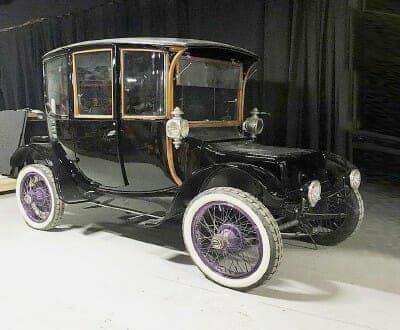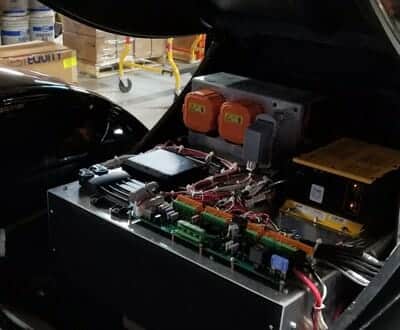Innovation
TORONTO ELECTRIC INNOVATION

Toronto Electric has been in business since 1885. To remain in business from the 19th to the 21st century, a company has to be nimble, adaptable, and innovative.
Our first job in Toronto was converting the street lights from gas to electric power.
Here are a few of the more interesting and unusual projects we’ve worked on in recent years.
POWERING OUR FACILITY WITH SOLAR ENERGY
We at Toronto Electric have spent many years experimenting with various solar energy systems and strategies. We have built and tested charge controllers and battery storage systems, and applied some of them to mobile transportation projects. Then in 2008, when we discovered the solutions from Solera Sustainable Energies, we covered our roof with a 72KW solar system. It’s clean and effective—click here to see the energy we have generated!

OUR OWN ELECTRIC CAR DESIGN: PROJECT EVE
After working on electric vehicle conversions, we decided to design and build our own electric car. The project resulted in Eve, a car that has been covered in the press and in a documentary video, and even had a bit part in a movie. Eve has been on the road since 2009. The project was very interesting.
We used some innovative Canadian designers and products. Eve’s first drive train was an air-cooled system from Azure Dynamics in Ontario (they are now defunct); the second drive train is still in use: it’s a liquid-cooled TM4 system from Quebec. The charger is a Delta-Q from British Columbia. The chassis was designed and built in Ontario, and the body panels were built in Quebec and Ontario.
As of 2016, Eve is still on the road, running fine with 10-year-old batteries. The problem in commercializing a product like this is the rules and regulations, which are the same as those for designing, building and testing gasoline-powered vehicles.

RESTORING A 1916 RAUCH AND LANG ELECTRIC VEHICLE

As a side project, we restored a 1916 Rauch and Lang electric carriage car. Yes, there were electric cars in 1916—in fact New York City had a charging network for electric vehicles.
The Rauch and Lang is a very nice, driveable car, built of steel, aluminum, iron and wood. The windows have pull-down shades. The seats face each other, encouraging conversation! It was the first car that could be driven from the back or front seat!
We had to remove the original DC powered electric drive train (it required far too much maintenance) and replace it with lithium batteries and a new TM4, the Quebec-made drive train used in our Eve car. It can reach approximately 70 Km/h—the main safety feature being speed!

